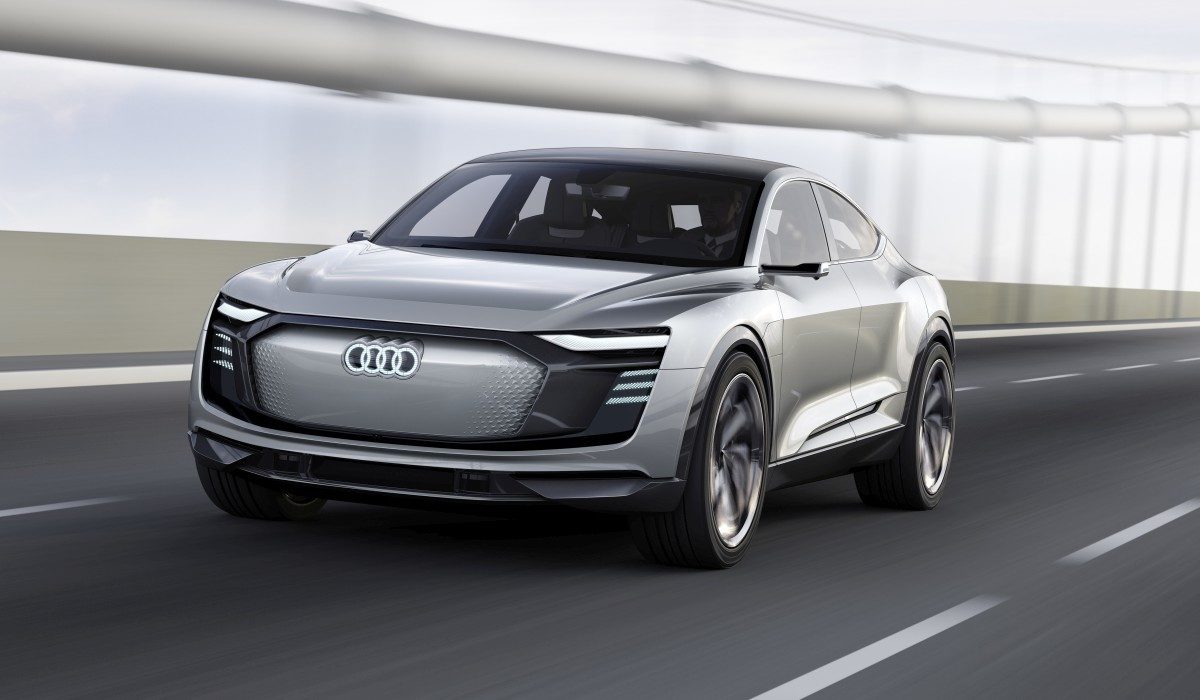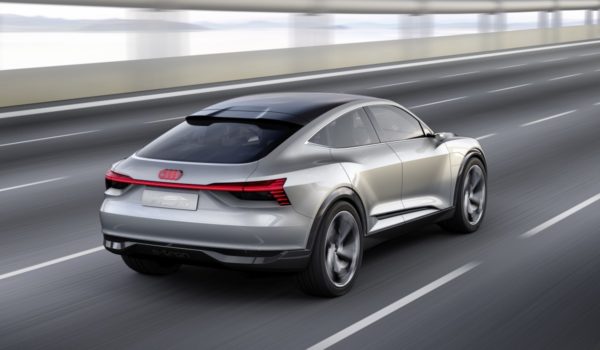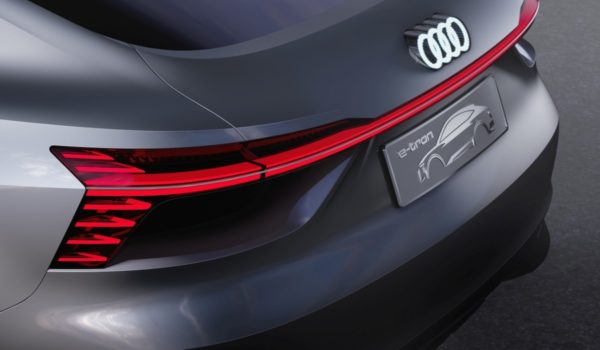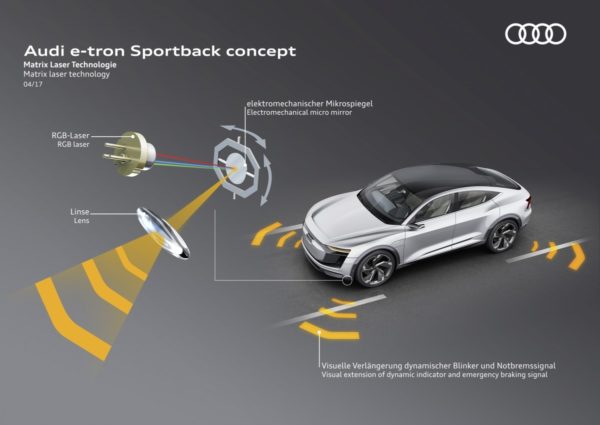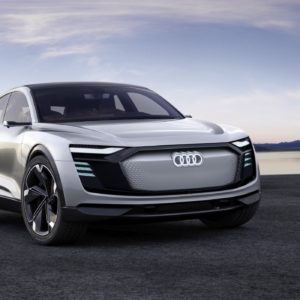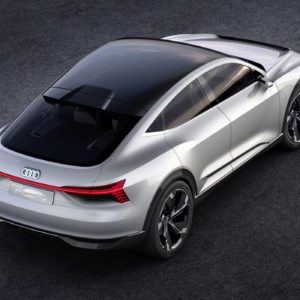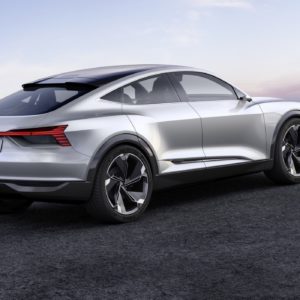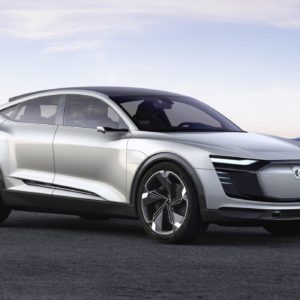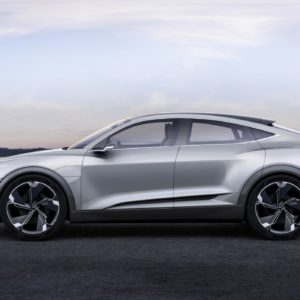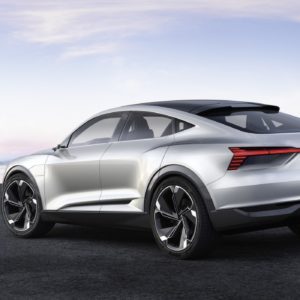Audi has unveiled a new, versatile concept car at the Auto Shanghai. Powered by a 320 kW electric drive, the four-door Gran Turismo Audi e-tron Sportback concept is designed to combine classic Audi elements with an array of trendsetting details such as an electrifying architecture, tailored consistently to the technology and the package of the electric drive. The Audi e-tron Sportback represents an important milepost for Audi along the road to electric mobility. The production version of this pioneering electric SUV will appear on the market in 2018. The Audi e‑tron Sportback concept car will be followed by its production version in 2019.
In its light-coloured interior, the Audi e‑tron Sportback concept is designed to offer a blend of functional clarity and reductive controls as a formal principle. Expansive touch-sensitive screens below the central display, on the centre console and in the door trims supply information and interact with the on-board systems. Horizontal surfaces on the dashboard and the seemingly floating centre console convey a sense of open perspectives for the occupants of the four individual seats.
Also Read – New Audi Q8 Production To Commence In 2018; Q4 In 2019
The concept car’s lighting technology is an innovation that is visible by both day and night. Digitally controlled Matrix LED units at the front and rear are aimed to produce an excellent light yield. Minuscule Digital Matrix projectors literally make their mark on the road ahead, turning light into a versatile, dynamic channel of communication with the surroundings. The technology study for Shanghai premieres a whole host of complex functions that steer vision and interaction with the surroundings in a new direction.
Narrow light strips on both sides below the front lid – the daytime running lights – become the eyes on the face of the study. Thanks to a combination of LEDs and a micromirror-studded surface plus complex control technology, a large number of animated movements and signatures are possible. When the e‑tron Sportback starts and also when the doors are opened, the system uses switchable segments to generate dynamic visual welcome signals.
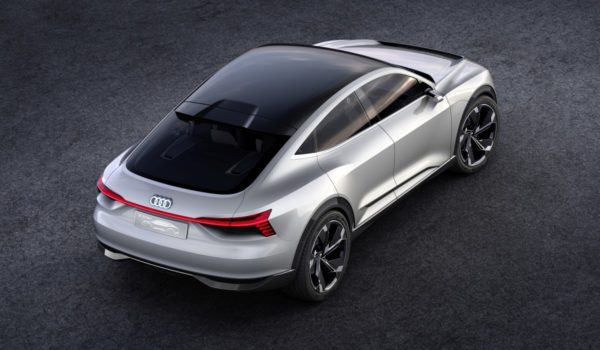
Below the daytime running lights, to the left and right of the Singleframe, there are two large-area light fields each comprising an arrangement of around 250 LEDs. They offer a vast array of possibilities for creating engaging graphics or specific communicative signs, even while on the move.
For its drive, the e‑tron Sportback uses a configuration that will also be adopted in future production Audi models with all-electric drive. One electric motor on the front axle and two on the rear would power all four wheels, transforming the high-performance coupé into a quattro in typical Audi style. 320 kW or 435 hp of power – which can even reach 370 kW or 503 hp in the boost mode – provide a fitting level of propulsion, with the sprint from 0 to 62mph claimed to be achieved in just 4.5 seconds. With the battery’s energy content of 95 kilowatt-hours, its range is in excess of 310 miles.
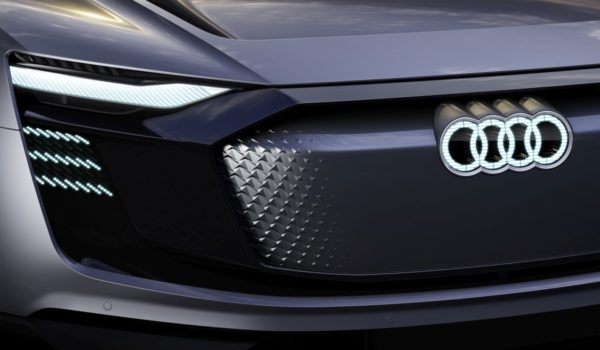
As previously on the e‑tron quattro concept, the technology study’s liquid-cooled lithium-ion battery is positioned between the axles below the passenger compartment. This installation position provides for a low centre of gravity and a balanced axle load distribution of 52:48 (front/rear), giving outstanding driving dynamics and driving safety compared with other vehicles in the segment. The battery can be charged by the Combined Charging System with dual connections for alternating current (AC) and direct current (DC).
The study vehicle’s front end displays the familiar octagonal Singleframe with an overtly wide, horizontal cut – the greatly reduced amount of air required by the electric motor means the large opening can be omitted here. The sculptural surface painted in the body colour has a structured pattern emblasoned with the four-rings logo – just like the grille of the classic Singleframe.
The edges of the central surface are drawn back, allowing air to flow through at the top. The air inlet is bracketed again by an octagonal, black-painted frame that structures almost the entire width of the front end.
Between the front lid extending low down, the front apron and the wheel arches, it combines with the light units to give this Audi an unmistakable face. The Audi designers also adopt a new tack for the air flow through the front lid. Above its front section, which dips deeply at the front, a bridge running parallel with the nose connects the two wheel arches and also doubles up as an air deflector.
Don’t Miss – New Audi A8’s Body Structure To Use Mix Of Four Materials
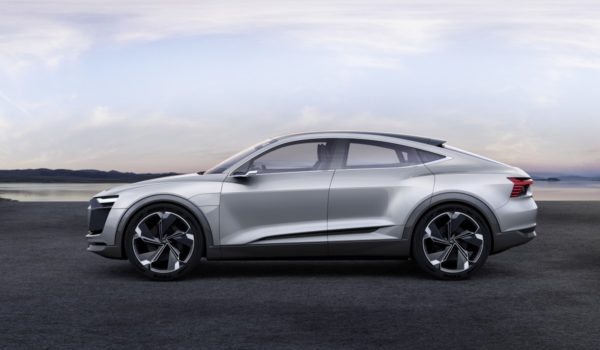
This gives the front end a much more dynamic character than the hefty forward structure of a car with a combustion engine installed at the front.
At the sides of the concept car, the wheel arches extending well out from the cabin with pointedly horizontal top edges define the conspicuous quattro architecture. As well as providing visual evidence of a wide track and dynamic potential, they also bind the e‑tron Sportback into the brand’s DNA. Large 23-inch wheels in a technical 6-spoke design highlight the confident presence of the imposingly dimensioned coupé. An exterior length of 4.90 metres, a width of 1.98 metres and a height of 1.53 metres with a wheelbase of 2.93 metres position the e‑tron Sportback in the C segment, close to the Audi A7.
Small cameras replace the exterior mirrors. This technology offers other advantages besides improved air flow and reduced wind noise. The blind spot of the physical exterior mirror is virtually eliminated, as is the obstruction to the diagonal forward view. The camera images are shown on separate displays in the doors. Audi is showing this technology as a concrete foretaste of the production version.

